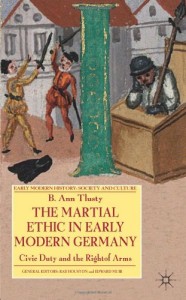Excerpted
“The Cause of All Nations: An International History of the American Civil War”by Don H. Doyle in a recent Salon:
While the war was being fought on the battlefields of Bull Run, Antietam, and Gettysburg, another contest was waged overseas. The Confederacy sought international recognition and alliances to secure independence, and the Union was determined not to let that happen. “No battle, not Gettysburg, not the Wilderness,” one historian claimed, “was more important than the contest waged in the diplomatic arena and the forum of public opinion.” The history of Civil War diplomacy—that is, the formal negotiations among governments and the strategies surrounding them—has been told and told well. This book turns to the less familiar forum of public opinion, which was filled with clamorous debate for four years. It took place in print (in newspapers, pamphlets, and books) as well as oratory (in meeting halls, pubs, lodges, union halls, and parliaments). Wherever free speech was stifled, as it was in France, the debate continued over private dinner tables and at cafés. Whatever one’s views, there was general agreement that the American question mattered greatly to the world and to the future.
The Union and Confederacy each hired special agents, who usually operated under cover of some kind. They were typically veteran journalists and political operators whose job it was, as one of them deftly put it, to give “a right direction to public sentiment” and correct “erroneous” reports that favored the other side. Some bribed editors and hired journalists, while others published their own pamphlets, books, and even newspapers. Few were above planting rumors or circulating damaging stories, and some of what they produced can only be described as propaganda and misinformation. But that was only part of the story of what was more often a sophisticated appeal to ideology and values.
In today’s parlance the diplomatic duel that took place during America’s Civil War can be understood as a contest of smart power, the adroit combination of hard-power coercion with soft-power appeals to basic values. Hard-power diplomacy typically involves the threat or use of military force, but can also include economic coercion (blockades, embargoes) and inducements (low tariffs, commercial monopolies). The employment of soft power involves persuasion and information, but the underlying strategy is to appeal to the fundamental values and interests of the foreign country, to demonstrate that the two countries in question share common aspirations. Soft power resides in “the power of attraction,” not in crude propagandizing.
The Union won and the South lost this diplomatic duel abroad not because the Union possessed an obviously more appealing message. To the contrary, at the outset many foreigners found the South’s narrative of valiant rebellion against the North’s oppressive central government far more attractive. Slavery had never disqualified a nation from acceptance into the family of nations. The United States and most European powers had at some point sanctioned slavery with no loss of status under international law. Confederate emissaries abroad were nonetheless instructed to avoid discus.sion of slavery as the motive for secession, and they happily pointed to Lincoln’s own promises to protect slavery in the Southern states as proof that this was not the issue. Southern diplomats crafted an appeal that evoked widely admired liberal principles of self-government and free trade. The conflict, they told the world, was one arising naturally between industrial and agrarian societies, not freedom and slavery. The industrial North wanted high protective tariffs, while the agrarian South wanted free trade with Eur. Southern leaders had rehearsed their foreign policy for years, and they began their rebellion fully confident that Europe would bow to “King Cotton.” “What would happen if no cotton was furnished for three years?” South Carolina’s James Henry Hammond asked in 1858. “England would topple headlong and carry the whole civilized world with her, save the South. No, you dare not make war on cotton. No power on earth dares to make war upon it. Cotton is king.
The American crisis not only heartened the enemies of democracy; it also emboldened them to invade the Western Hemisphere, to topple governments, install European monarchs, and reclaim lost American empires. Suddenly, the Civil War rendered the Monroe Doctrine toothless. Republican regimes in Mexico, the Dominican Republic, Peru, Chile, Uruguay, Paraguay, and, not least, the United States were suddenly vulnerable to imperialist aggression, including nefarious plots to install European princes and recolonize their lands.
The most audacious of European schemes was Napoleon III’s Grand Design for Latin Catholic empire. It began with an allied invasion of Mexico late in 1861 and led to the installation of the Hapsburg archduke Maximilian as emperor of Mexico in 1864. The Grand Design went far beyond Mexico to envision the unification of the “Latin race” in America and Europe, under the auspices of the French, and to reverse the advances of Anglo-Saxon Protestantism and egalitarian democracy in the Western Hemisphere.As its bid to win support in Britain foundered, some thought due to popular antislavery sentiment, the Confederacy sought to align itself with Napoleon III by adopting a Latin strategy that would make common cause with the French and the Catholic Church against the “Puritan fanatics” of the North. The Confederacy sent emissaries to the vatican, appealing to Pope Pius IX, the archenemy of republicanism, to bless their “holy war” against the “infidels” of the North. They also contrasted the North’s “mobocracy” to the traditions of patrician rule among the South’s European-style gentry. Southerners even encouraged Europeans to think the Confederacy might prefer a monarchical form of government, perhaps under a European prince. on several occasions Southern leaders proposed some kind of permanent league with, or protectorate under, France, Britain, or Spain. All this portended far more than mere separation under a new flag.
Southerners also took pains to emphasize they were sympathetic with European designs to restore monarchy and Catholic authority in Latin America. Confederate diplomats were instructed to repudiate the South’s earlier imperialist ambitions for a tropical empire in Latin America. They assured Europeans that with an independent South, expansion would no longer be necessary.
...
At the end of the war, Eugène Pelletan, a leading French republican, expressed eloquently what the American question had meant to the world: “America is not only America, one place or one race more on the map, it is yet and especially the model school of liberty. If against all possibility it had perished, with it would fall a great experiment."
Some readers may feel such unqualified admiration of America was undeserved. The Union, everyone knows, had been painfully slow to embrace emancipation, and America’s deeply ingrained racial prejudice would long outlast slavery. These were only some of the egregious flaws in the nation foreign admirers hailed as the Great Republic.
Yet we miss something vitally important if we view Pelletan and other foreigners who saw America as the vanguard of hope as naive or misguided. Foreign admirers typically regarded the United States not as some exceptional city upon a hill, but as exactly the opposite: an imperfect but viable model of society based on universal principles of natural rights and theories of government that originated in Europe but had thus far failed to succeed there. In the 1860s they were horrified to see government of the people seriously imperiled in the one place it had achieved its most enduring success. Abraham Lincoln was hardly boasting when he referred to America as the “last best hope of earth.” His was a forlorn plea to defend America’s—and the world’s—experiment in popular government.
In the mid-nineteenth century, it appeared to many that the world was moving away from democracy and equality toward repressive govern- ment and the expansion of slavery. Far from being pushed off the world’s stage by human progress, slavery, aristocratic rule, and imperialism seemed to be finding new life and aggressive new defenders. The Confederate South had no intention of putting slavery on the road to extinction; its very purpose in breaking away was to extend and perpetuate slavery— forever, according to its constitution. Had the Confederacy succeeded, it would have meant a new birth of slavery, rather than freedom, possibly throughout the Americas, and it would have been a serious blow to the experiment in egalitarian democracy throughout the Atlantic world.
Long after the defeat of the Confederacy, enemies of liberal, egalitarian society had every reason to look back on America’s Civil War with regret. In 1933, during an after-dinner discussion in Munich, Adolf Hitler bemoaned the South’s defeat in chilling terms: “The beginnings of a great new social order based on the principle of slavery and inequality were destroyed by that war, and with them also the embryo of a future truly great America that would not have been ruled by a corrupt caste of tradesmen, but by a real Herren-class that would have swept away all the falsities of liberty and equality.” Hitler’s reading of America’s history might have been grotesquely flawed, but his outburst echoed the same refrains against the evils of “extreme democracy” and “fanatical egalitarianism” heard in the 1860s.



